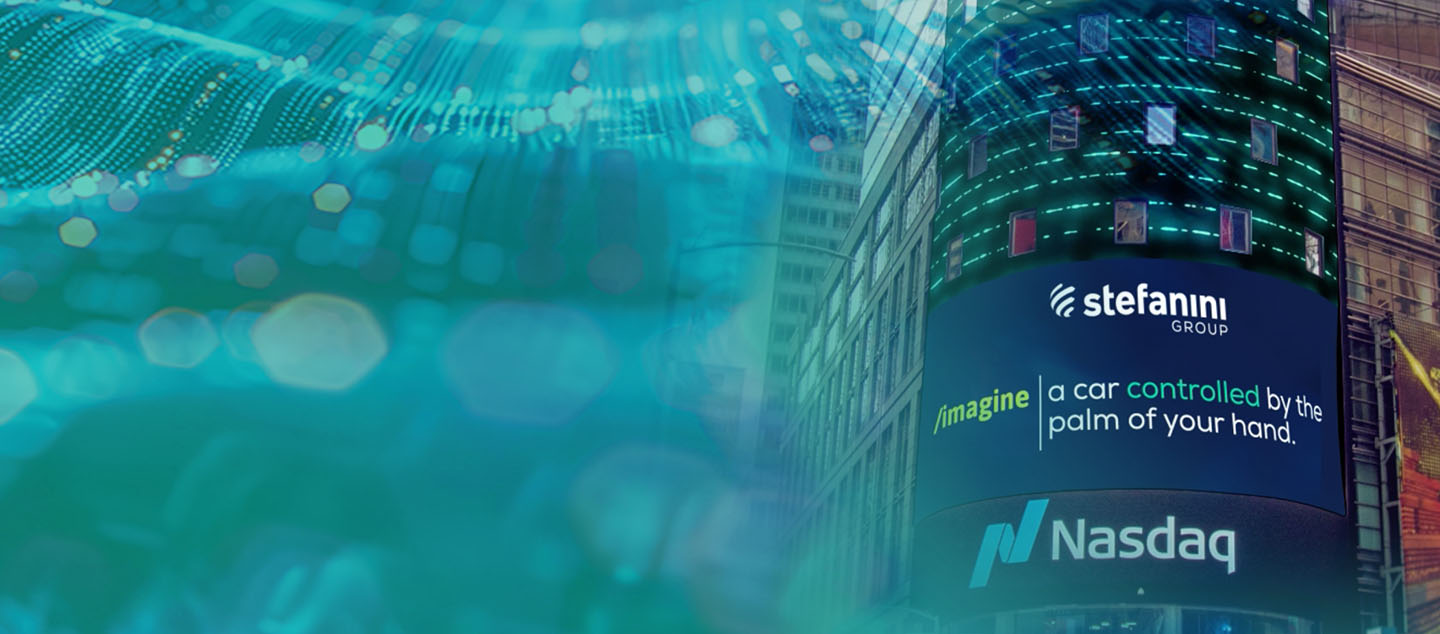Hyperautomation directs enterprises to automate anything that can be automated. Learn about the various ways your business can start automating work processes.
- What is Hyperautomation?
- How Does Hyperautomation Work?
- What are the Benefits of Hyperautomation?
- Examples of Hyperautomation Technology
- Automate Your Business Processes with Stefanini
The buzz surrounding hyperautomation isn’t going away anytime soon. And for good reason – one of Gartner’s strategic technological trends for 2021, hyperautomation is all about amplifying an enterprise’s ability to automate work.
The obvious benefits – including faster, more standardized workflow processes – all lead to empowering employees to do their jobs much more effectively. By automating knowledge-related work, more people across the organization become engaged in the enterprise’s path to digital transformation.
How is hyperautomation a crucial part of organizations looking to scale automation much more efficiently? That answer and more can be found in this blog post!
Interested in other Gartner tech trends? Get more info from our write-up on anywhere operations!
Hyperautomation Keeps Coming Back
2021 isn’t the first year that Gartner included hyperautomation on its list of strategic tech trends.
In “Top 10 Strategic Technology Trends for 2020,” Gartner first advised organizations to start using technology to automate tasks that once required human direction and intervention. In fact, 2020 was all about human augmentation and artificial intelligence, with Gartner predicting exciting advances in terms of using technology to give employees almost “superhuman” capabilities.
Thematically, the term initially fell under the umbrella of “people-centric smart spaces,” which means considering how specified tech trends would affect people and the places they live. It comes as no surprise that in preparation for 2021, Gartner still included the theme of “people centricity” to group its strategic trends, a focus that the coronavirus pandemic brought to the forefront.
Though hyperautomation was moved to the “resilient delivery” theme, the idea of using technology to enhance the ways people complete their tasks continues to be one of upmost importance to organizations looking to recover from any economic losses brought on by the pandemic while simultaneously improving the ways they do business.
What is Hyperautomation?
We’ve previously addressed the importance of hyperautomation in the new decade, broadly defining the term as “anything that can be automated in an organization should be automated.” This attitude is especially important when considering the many expensive and extensive issues that arrive from legacy business processes that are not streamlined.
Gartner notes that many organizations are supported by a “patchwork” of technologies that are not lean, optimized, connected, clean or explicit. While digital transformation is a goal for many businesses, achieving this objective requires efficiency, democratization, and speed. And while some organizations may balk at the time it takes to implement hyperautomation effectively, the efficiency, efficacy, and agility it enables is ultimately worth it.
How Does Hyperautomation Work?
The concept of hyperautomation seems simple enough, yet actually breaking down how it works is, of course, more complicated. BTOES Insights offers a more technical definition of the term, citing Gartner’s definition of leveraging “the application of advanced technologies, including artificial intelligence (AI) and machine learning (ML), to increasingly automate processes and augment humans.”
From this perspective, hyperautomation relates to both the range of automation tools that can be automated, as well as the sophistication of automation platforms in terms of discovery, analysis, design, automation, measurements, monitoring, and reassessment.
When compared to robotic process automation (RPA), we find that hyperautomation more specifically refers to improving the way we work. In contrast, RPA merely focuses on a robot or system that can follow rule-based processes and perform low-level and repetitive tasks.
Hyperautomation takes this technology one step further by applying ML to use data to identify patterns and learn from them. Little human intervention is needed once its algorithms are trained with data and create a model for usage.
Further, the term goes by many names; while Gartner calls it hyperautomation, IDC refers to it as “Intelligent Process Automation” while Forrester defines it as “Digital Process Automation.” While these different names may seem confusing, all of these terms have one underlying function: combining RPA and AI with intelligent business management software for increased AI-driven decision-making.
This approach often results in the creation of a digital twin of the organization (DTO) that allows it to better visualize how functions, processes, and key performance indicators interact to drive value.
What are the Benefits of Hyperautomation?
According to Gartner, 69 percent of the tasks typically completed by managers (such as task assignment and collecting feedback related to performance) will be automated processes by 2024. With more repetitive tasks automated, members of your workforce will have more time to research the latest business and marketplace information, craft strategy, and resolve problems with creative solutions.
With hyperautomation, your business and its leaders will enjoy the following benefits:
- Advanced analytics
- Increased employee satisfaction and motivation
- An educated workforce
- Increased employee capacity
- Instant and accurate insights
- Greater compliance and reduced risk
- Greater productivity
- Increased team collaboration
Examples of Hyperautomation Technology
While RPA has provided organizations over the past decade with various benefits, hyperautomation takes it one step further by allowing for end-to-end automation technologies and approaches via unstructured data. The following repetitive business processes are great places to start for any organization looking to add hyperautomation to its workflow:
1. Processes triggered by incoming documents or email: in these processes, an incoming document or email (that has semi-structured or unstructured data) is collected by a script or an RPA bot. This document is then processed with a machine learning model that validates it either by rules or ML models. The validated and enriched machine-readable data is then passed onto the next system of record.
2. The accounts payable process: this process includes receiving, processing, and paying out invoices from suppliers that provided goods or services to the company. While manual processing can be expensive, take too much time, and lead to errors, businesses can automate this process with machine learning and document extraction technologies like optical characters recognition (OCR), which converts texts containing images into characters that can be readable by computers to edit, compute, and analyze.
3. Travel & Expense processes: these processes include collecting travel expense paper receipts, extracting data from these receipts, making sure receipts are compliant with the company’s expense policies, and completing payments.
4. Order management: these processes include retrieving email and relevant attachments, extracting information that tells the business what its customers want, updating internal systems with newly placed orders or modifications, or taking necessary actions related to customer queries.
5. Document automation: this broad category references document processing that is supported by data extraction, validation, and enrichment. When document generation is necessary, hyperautomation enables data capture, data transformation into the desired format, arranging content, and the actual generation of the output document.
6. Enhance customer experience: hyperautomation can help teams develop and distribute customer loyalty offers faster while also optimizing these offers with customer insights. Now, enterprises can more easily guarantee they are delivering the relevant solutions their clients are demanding.
Take advantage of our predictive modeling solutions. More information here!
Automate Your Business Processes with Stefanini
From data analytics to Industry 4.0 and the Internet of Things, Stefanini is dedicated toward building end-to-end offerings that make us your ideal technology provider.
With Intelligent Automation, we integrate AI, data, and hyper intelligent automation to improve efficiency for your routine and revolutionize your business operations. By integrating and automating your operational, production, and IT systems, we can develop a solution that fits your business objective.
And when it comes to data insights, we collect data and then apply predictive analytics, AI, and machine learning to automate your entire processes with data intelligence.
Let us help you stay one step ahead of the competition. Connect with us today to learn more about the customized solutions Stefanini can build for your business!



















